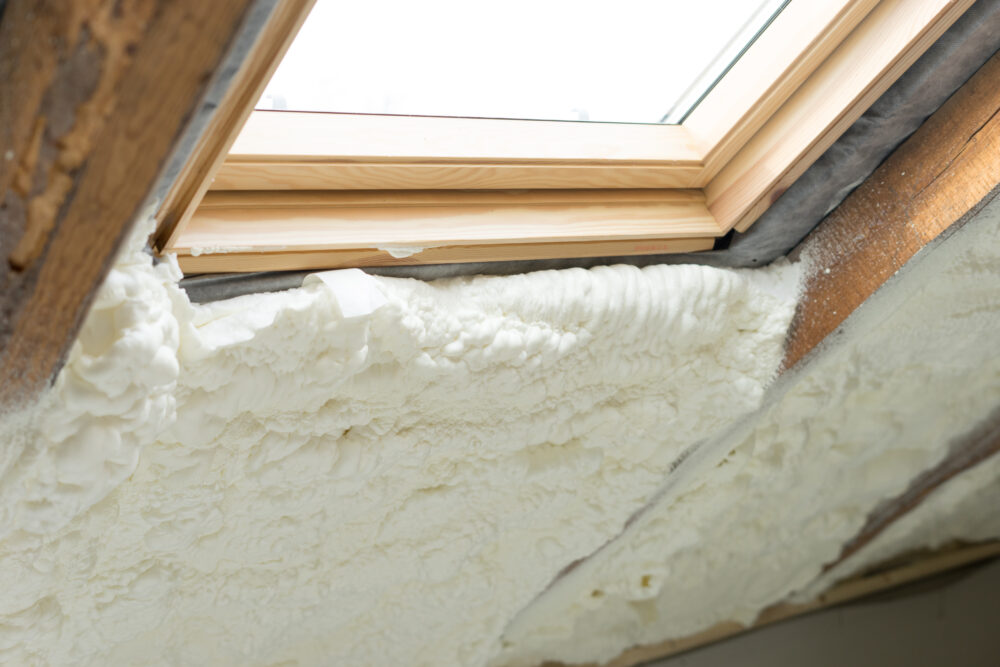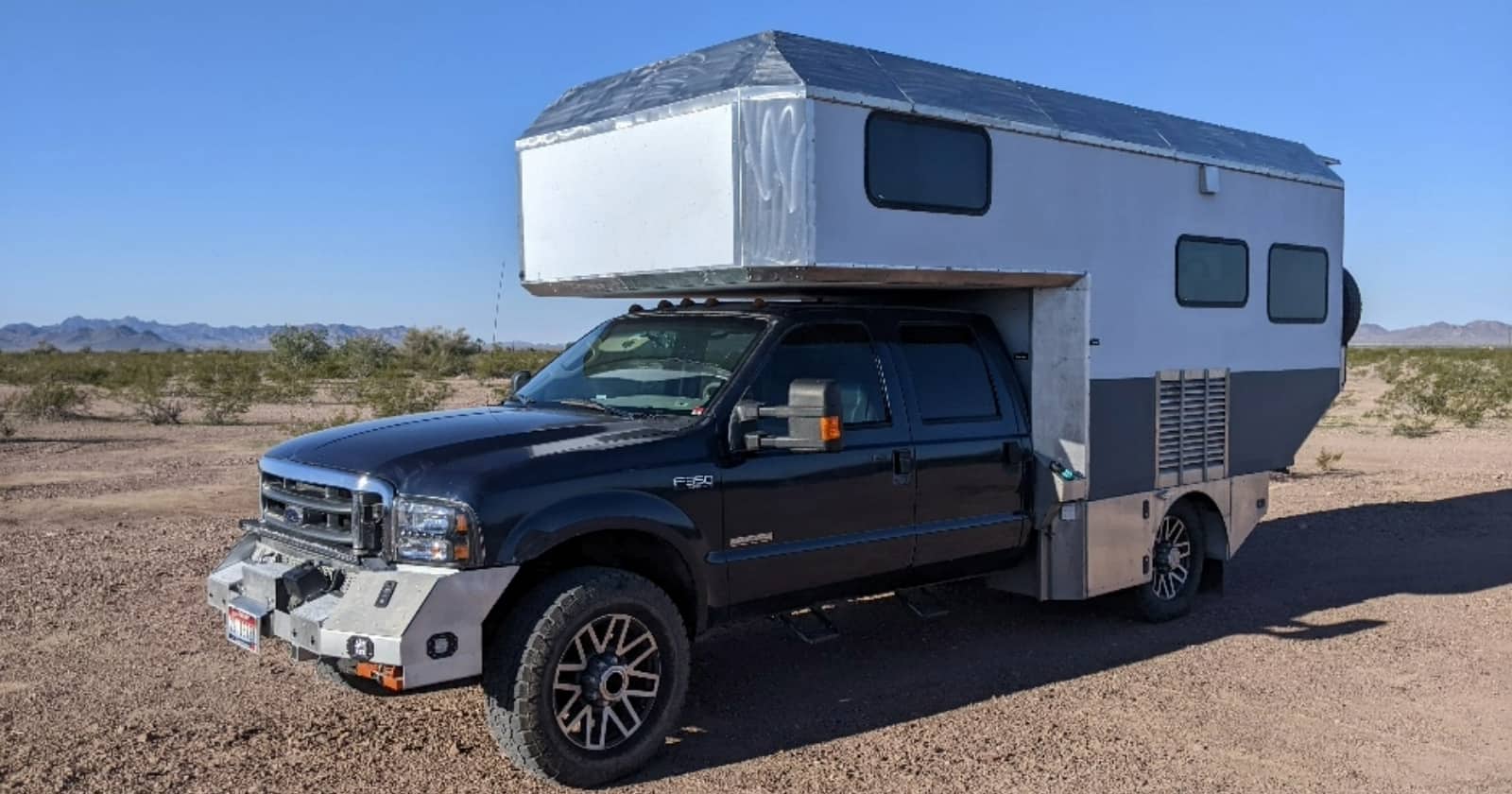 Source: Shutterstock
Source: ShutterstockCan You Use Spray Foam Insulation in RVs?
When it comes to RVs, you can opt for the models that are already assembled, augment a vehicle you bought, or build your own camper from scratch! Regardless of the method you choose, one area that must be addressed is insulation. This will keep your RV warm in the winter and cool in the summer. Many people use spray foam insulation for their homes, but is it safe for RVs too?
You can indeed use spray foam insulation for RV projects. In fact, many people even prefer to work with this material. However it may not always be the best fit for your camper, so it’s important to explore the pros and cons, as well as alternative insulation options.
Below we’ll explore the details of spray foam insulation so you can decide whether you want to try it for your next RV build. We’ll also cover some basic information about other popular styles, such as fiberglass, foam board, and rock wool. You should be able to find the perfect fit somewhere on this list!
Spray foam insulation
Before we move into the pros and cons of spray foam, we should clarify what we’re talking about! Spray foam is made by combining isocyanate and polyol resin. When these are mixed together and sprayed onto a solid surface, they create a chemical reaction where they fuse and expand. The end result is known as polyurethane.
There are two main types of spray foam insulation you can choose from: open cell and closed cell.
Open cell spray foam contains extra space between the particles. This allows air bubbles and small pockets to form in the foam. As a result, it’s softer and more flexible than its counterpart. It’s also easier to fit into small gaps because it has a wider range of movement. If you need soundproofing, it’s a great material to choose!
Closed cell spray foam removes as much air from the equation as possible. It forms an airtight layer, which is denser and stiffer once it sets. As a result, closed cell foam is often used to improve stability. It is a bit harder to apply though, and it may shrink over time.
Although you can use either one of these for your next RV project, most people prefer to use closed cell spray foam. It’s sturdier, plus it doesn’t allow air or water to penetrate the foam layer.
With that in mind, let’s compare some of the best and worst parts about this type of insulation.
Pros
1. Lightweight
One of the best parts about spray foam is how light it is! In an RV, you have to work around weight limits. You don’t want the insulation to take up space and weight that could be reserved for cargo!
2. Fairly cheap
The price is another factor that could push you in this direction. Although spray foam isn’t the cheapest insulator on the market, it’s certainly better than some! Plus if you order a kit, you can get the spray applicator as part of the deal.
3. Spray-on application
There’s something very satisfying about how spray foam works! You just need to point and shoot, then watch the foam blossom. You’ll need to be careful about where you spray this substance, but the actual application process is fairly simple.
4. Adds structure and reinforcement
Many RVers prefer to work with closed cell foam because it adds an extra layer of strength and support to your build. The foam doesn’t have much give once it sets, so you won’t have to worry about wobbly walls.
5. Airtight seal
RV walls and ceilings are usually quite thin, so a small crack could lead to drafts, leaks, and all sorts of other issues. But if you have a layer of spray foam, this forms an airtight seal to protect your interior.
6. Built-in vapor barrier
When you insulate your RV, you need to think about how you’ll prevent condensation. Sometimes you’ll even need to use multiple types of material to serve as a vapor barrier and an insulator. But if you used closed cell foam, you can get both functions in one!
7. Works well for curved and unusual surfaces
Last, but not least, spray foam insulation is great for RVs because it can adhere to a variety of surfaces. Many RVs have curved walls and oddly-shaped edges. If you use other insulators, you would have to cut out extremely specific pieces to fit these spaces. But spray foam can fill any gap you place it in.
Cons
1. Application can be messy
Unfortunately, spray foam isn’t perfect. One potential drawback is the application process. Although it’s easy to spray the foam out, it can sometimes end up in places that you didn’t intend, and it can be a pain to clean up.
2. More expensive than some alternatives
Although this type of foam is cheaper than some, it’s not the most budget-friendly option on the market. A single kit can cost $250 or more, and many RVers find that they need multiple kits for each project. Reliable insulation is a good investment, but not everyone can afford this material.
3. Mid-range R-value
The R-value is another important thing to consider. Each kind of insulation has limits when it comes to the range of climates and temperatures it can withstand. Spray foam is decent for warm and cool weather, but it’s not the best insulator for extreme temperatures.
4. Poorly mixed foam won’t work or apply properly
As mentioned above, spray foam is made by combining isocyanate and polyol resin. The ratio is important here, because an imbalanced mix can cause all sorts of problems. The foam can be overly lumpy or it might not set properly. Either way, you could end up flushing money down the drain.
5. Can be dangerous to work with
As the foam sprays out, it can produce dangerous fumes. You’ll need to wear proper mouth and eye protection when you apply it. Covering your skin and hair is also important because spray foam can be difficult to remove.
6. May require professional installation
Finally, you may need to have someone else do this job for you. Spray foam insulation needs to be properly mixed, handled, and applied in an even layer. It can be difficult for an amateur to do everything right on the first try. So instead, you may need to spend time and money to get the job done right.
Alternative Insulation Types
Many people choose to use spray foam insulation for their homes and RVs. Although it’s not perfect, it has several benefits that have made it popular.
But if you’ve decided that this isn’t the right solution for you, there are several other insulators you can explore.
Foam board
Foam board is a budget-friendly alternative that has a similar R-value to spray foam. It comes in fairly large sheets and you can easily cut it to the correct size. If you have a boxy RV, this cheaper material could be the perfect thing to provide an extra layer of protection. You could even use a bit of spray foam to fill in the cracks if you want to go for a combination.
Fiberglass batting
If you’ve ever seen insulation that looks like pink or yellow cotton candy, it’s probably fiberglass batting. This comes in thick mats that can act as a buffer between your RV and the temperature outside. This is another material that’s fairly inexpensive, which makes it popular for large builds like homes. But fiberglass can be a little tricky to work with in an RV, and it’s bulkier than most other options.
Rock wool
Rock wool is fairly similar to fiberglass batting when you look at the overall appearance and texture. They’re both semi-rigid and a bit bulky. But rock wool is often preferable because it’s waterproof and fire resistant. It’s also harder for mold to develop in this material. But as a result, rock wool is more expensive.
Geopannel
If you want an eco-friendly insulator, you might want to look into GeoPannel. This company is fairly new to the scene, but they product insulated panels that are made with 80% recycled materials. They also designed this material to be extra durable and efficient. The prices may be a bit steep as a result, but it’s a good option to think about.
Get tips from other RVers
One of the best parts about RVing is engaging with the community of traveling enthusiasts. iRV2 forums allow folks to chat with other RVers online, and get other perspectives on everything RVing, including products, destinations, RV mods, and more.
Related articles:
- Why You Might Not Want to Replace Your Rig’s Single-Paned Windows With the Double-Paned Kind.
- Soundproofing Your RV: DIY Solutions For A Quiet Retreat
- RV Winterization and other Cold Weather Travel Considerations
Image Sources
- Spray,Polyurethane,Foam,Surface,Detail,For,Roof: Shutterstock




Be careful with the expanding foam. I know a few folks who weren’t careful in their RV’s and wound up with popped staples and bulging paneling on their inside walls. It expands more than you think.
Hello there. I rent to own small trailer home without any foundation.b It’s was built in 1989 and has broken pipes from last Christmas 2022:freezon temperature, need to replace old electrical heat tape, and need insulation. I Am Not a handy man or plumber, so please help me out by finding someone at alow cost. Iam jobless,broke, and in debt big time, but I am having tough time to get underneath my trailer help me out . I need free estimates. Iam too poor to have costly internet fax IBM PC printer copier scanner etc . My bathroom sink has no water pressure so I need your help asap. Thanks Alot, Sincerely Yours Raj. Have a nice day . I live at Pheasant Ridge Trailer Park-1000 or more homes on Colombia Avenue in Lancaster PA 17603- Penn Manor Township.